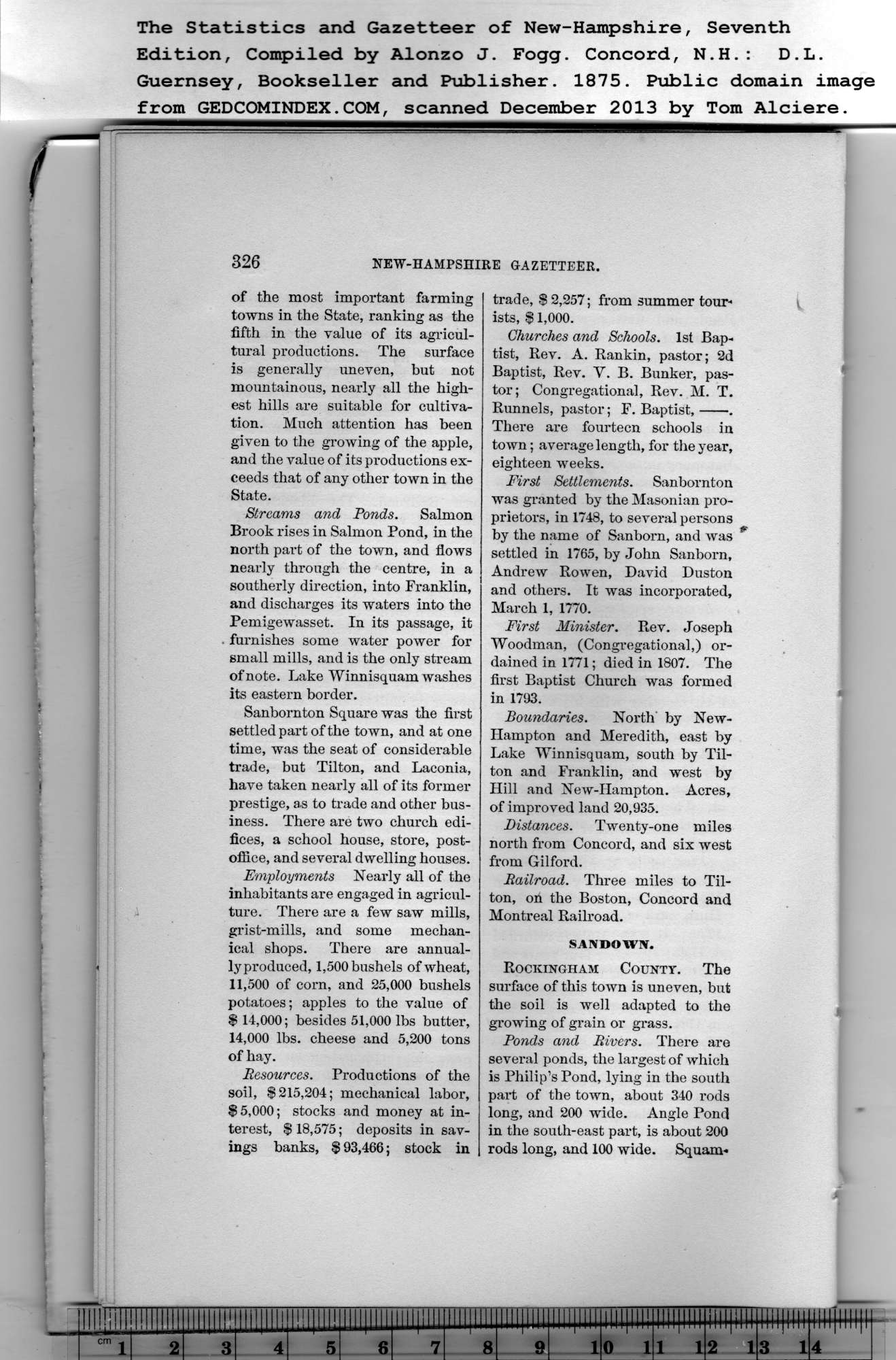|
of the most important farming
towns in the State, ranking as the
fifth in the value of its agricul-
tural productions. The surface
is generally uneven, but not
mountainous, nearly all the high-
est hills are suitable for cultiva-
tion. Much attention has been
given to the growing of the apple,
and the value of its productions ex-
ceeds that of any other town in the
State.
Streams and Ponds. Salmon
Brook rises in Salmon Pond, in the
north part of the town, and flows
nearly through the centre, in a
southerly direction, into Franklin,
and discharges its waters into the
Pemigewasset. In its passage, it
furnishes some water power for
small mills, and is the only stream
of note. Lake Winnisquam washes
its eastern border.
Sanbornton Square was the first
settled part of the town, and at one
time, was the seat of considerable
trade, but Tilton, and Laconia,
have taken nearly all of its former
prestige, as to trade and other bus-
iness. There are two church edi-
fices, a school house, store, post-
office, and several dwelling houses.
Employments Nearly all of the
inhabitants are engaged in agricul-
ture. There are a few saw mills,
grist-mills, and some mechan-
ical shops. There are annual-
ly produced, 1,500 bushels of wheat,
11,500 of corn, and 25,000 bushels
potatoes; apples to the value of
$ 14,000; besides 51,000 lbs butter,
14,000 lbs. cheese and 5,200 tons
of hay.
Resources. Productions of the
soil, $215,204; mechanical labor,
$5,000; stocks and money at in-
terest, $ 18,575; deposits in sav-
ings banks, $93,466; stock in
trade, $ 2,257; from summer tour-
ists, $ 1,000. |
Churches and Schools. 1st Bap-
tist, Rev. A. Rankin, pastor; 2d
Baptist, Rev. V. B. Bunker, pas-
tor; Congregational, Rev. M. T.
Runnels, pastor; F. Baptist, .
There are fourteen schools in
town; average length, for the year,
eighteen weeks.
First Settlements. Sanbornton
was granted by the Masonian pro-
prietors, in 1748, to several persons
by the name of Sanborn, and was
settled in 1765, by John Sanborn,
Andrew Rowen, David Duston
and others. It was incorporated,
March 1, 1770.
First Minister. Rev. Joseph
Woodman, (Congregational,) or-
dained in 1771; died in 1807. The
first Baptist Church was formed
in 1793.
Boundaries. North' by New-
Hampton and Meredith, east by
Lake Winnisquam, south by Til-
ton and Franklin, and west by
Hill and New-Hampton. Acres,
of improved land 20,935.
Distances. Twenty-one miles
north from Concord, and six west
from Gilford.
Railroad. Three miles to Til-
ton, on the Boston, Concord and
Montreal Railroad.
SANDOWN.
Rockingham County. The
surface of this town is uneven, but
the soil is well adapted to the
growing of grain or grass.
Ponds and Rivers. There are
several ponds, the largest of which
is Philip’s Pond, lying in the south
part of the town, about 340 rods
long, and 200 wide. Angle Pond
in the south-east part, is about 200
rods long, and 100 wide. Squam- |
